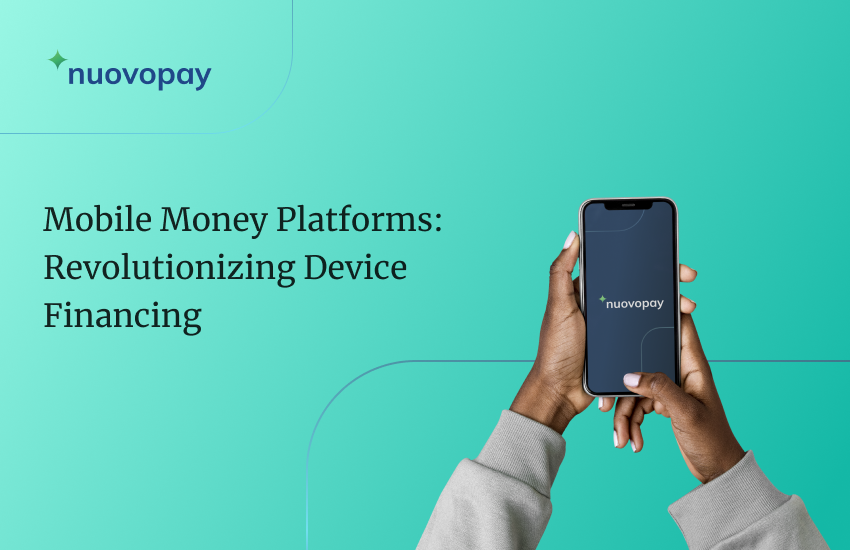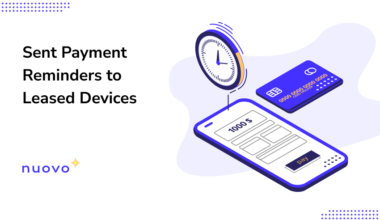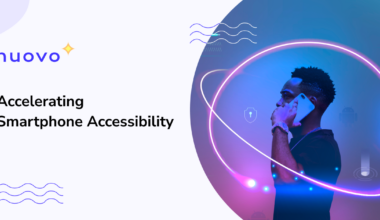It was the year 2009. In Kenya, M-Pesa was launched by Safaricom. M-Pesa revolutionized mobile banking by allowing millions to send and receive money, make bill payments, and access other financial services using their mobile phones.
Since then, mobile money platforms have gained popularity and expanded to various countries around the world, providing convenient and accessible financial services to underserved and unbanked populations.
In this article, we will explore how mobile money platforms are revolutionizing mobile device financing, helping to fill the digital divide.

What is Mobile Money?
Mobile Money is a system of mobile payments centered around accounts held by a mobile operator, which can be accessed from subscribers’ mobile phones. The process of converting cash into electronic value, and vice versa, occurs at retail stores or through authorized agents. Every transaction is instantly authorized and recorded using SMS, ensuring real-time monitoring and tracking.
Mobile money is a flexible and convenient digital method of payment and value storage. It operates through mobile money accounts and a network of agents without the need for traditional banks. It can be accessed with a basic mobile phone, eliminating the requirement for a bank account. In contrast, mobile banking refers to using dedicated applications on mobile devices to access various banking services like deposits, balance inquiries, and money transfers.
What are Mobile Money Platforms?
Now, let’s turn our attention to the heroes of our story – mobile money platforms. Mobile money platforms are digital financial services that allow users to perform various transactions, such as money transfers, bill payments, and even device financing, using their mobile devices. These platforms have gained significant traction worldwide, enabling individuals to conduct financial activities conveniently and securely without the need for traditional banking services.
Thanks to the advent of mobile money platforms, financing a dream smartphone or tablet has become easier than ever. Mobile money platforms have transformed the way we handle financial transactions, and they are playing an integral role in the world of mobile device financing.
Role of Mobile Money Platforms in Mobile Device Financing
Mobile money platforms have revolutionized the landscape of mobile device financing, offering numerous advantages over traditional methods. Let’s take a closer look at the key benefits these platforms bring to the table:
Accessibility and convenience
Mobile money platforms are easily accessible to anyone with a mobile device and a network connection. They eliminate the need for physical visits to banks, making device financing a hassle-free experience.
Flexibility in payment plans
With mobile money platforms, users can choose from a range of flexible payment options. They can select installment plans that suit their financial capabilities, allowing them to manage their expenses effectively.
Faster approval and disbursement process
Unlike traditional financing options that often involve lengthy approval processes, mobile money platforms offer quick and streamlined processes for obtaining device financing. Users can receive approval and disbursement within minutes, getting their hands on their desired devices sooner.
Inclusion of underserved populations
Mobile money platforms have played a significant role in bridging the financial inclusion gap. They have empowered individuals in underserved communities who previously had limited access to formal banking services, enabling them to fulfill their aspirations of owning mobile devices.
Risks associated with device financing via mobile money platforms
To access mobile money platforms be it for personal or for work or school, the users need to first have access to a mobile phone. While the financial inclusion aspect, as well as the convenience brought in by mobile money platforms, is great, there is still some resistance from mobile money platform providers to extending device financing. Primarily stemming from the risks associated with financing devices without collateral, these challenges stand in the way of bridging the digital divide and the widespread use of mobile devices in geographies where it is needed the most.
It really is the egg before the hen conundrum, so to speak.
A bundle with a mobile phone + mobile money platform that is financed via the same mobile money platform is the most obvious solution, but mobile money platforms shy away from going all in, owing to the risk of losing the physical device and its subsequent EMI payments when financed.
This is why a device financing risk management (DFRM) platform is the key.
How DFRM helps
DFRM platforms like NuovoPay have implemented safeguards to prevent the misuse of smartphone financing schemes. By rendering financed smartphones virtually inoperable, these platforms act as a deterrent to individuals seeking to exchange financed phones for cash.
To protect against defaults, DFRM technology utilizes proactive measures. It sends payment reminders before the due date and follows up with overdue payment messages, encouraging customers to make timely payments. If payments remain pending, organizations can remotely lock the device, restricting calling and messaging functionalities.
The detection of a SIM card removal from a financed handset triggers instant action from financing providers. They can promptly lock the device and restrict phone usage to safeguard their investment. However, this process maintains the customer relationship, minimizing the disruption often associated with SIM card removal. In addition to reducing delinquency rates, DFRM also helps minimize collection costs.
Furthermore, DFRM platforms have integration with multiple payment modes as a key feature, which is where mobile money platforms can fit in seamlessly. The device repayment can be made using the integrated mobile money platform and individuals can continue to own the device while also being active users of the mobile money platform.
Closing lines
Mobile money platforms have revolutionized mobile device financing, providing accessibility, convenience, and flexibility to users around the world. These platforms have played a crucial role in bridging the financial inclusion gap and empowering underserved populations to fulfill their aspirations of owning mobile devices. However, risks associated with device financing through mobile money platforms remain a challenge.
Device Financing Risk Management (DFRM) platforms like NuovoPay have emerged as solutions, offering safeguards against misuse and default. With proactive measures such as payment reminders and remote locking of devices, DFRM platforms protect the interests of financing organizations while preserving customer relationships. Integration with multiple payment modes, including mobile money platforms, further enhances the overall user experience. As mobile money and DFRM continue to evolve, they hold the potential to bridge the digital divide and enable widespread access to mobile devices where it is needed the most.





